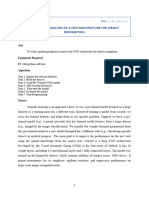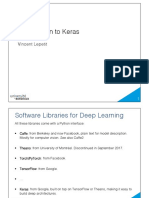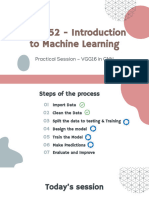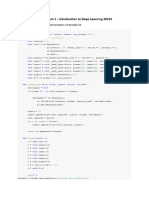0% found this document useful (0 votes)
97 views5 pagesVGG16 Face Recognition Guide
This document provides code to perform face recognition on images of three students (Hui, Kris, and Niva) using a VGG16 deep learning model. The code loads pretrained VGG16 weights, adds classification layers, and trains the model on folders of images for 20 epochs. Evaluation metrics like accuracy are calculated and graphs of loss and accuracy over epochs are generated. The trained model is saved and can then be used to classify images in a test folder.
Uploaded by
NURUL ANIS EMILLIA BINTI NAZRI STUDENTCopyright
© © All Rights Reserved
We take content rights seriously. If you suspect this is your content, claim it here.
Available Formats
Download as DOCX, PDF, TXT or read online on Scribd
0% found this document useful (0 votes)
97 views5 pagesVGG16 Face Recognition Guide
This document provides code to perform face recognition on images of three students (Hui, Kris, and Niva) using a VGG16 deep learning model. The code loads pretrained VGG16 weights, adds classification layers, and trains the model on folders of images for 20 epochs. Evaluation metrics like accuracy are calculated and graphs of loss and accuracy over epochs are generated. The trained model is saved and can then be used to classify images in a test folder.
Uploaded by
NURUL ANIS EMILLIA BINTI NAZRI STUDENTCopyright
© © All Rights Reserved
We take content rights seriously. If you suspect this is your content, claim it here.
Available Formats
Download as DOCX, PDF, TXT or read online on Scribd
/ 5























































































